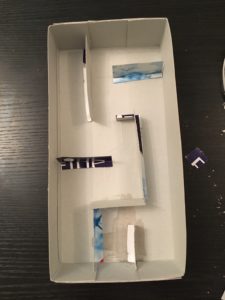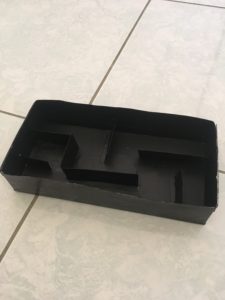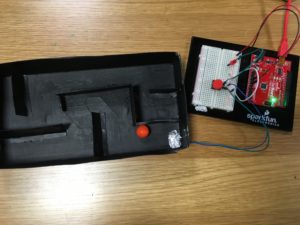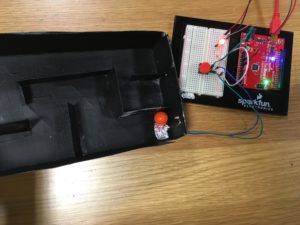Reading ‘The Art of Interactive Design’ was an interesting experience. Defining the term ‘interactive’ has always been of interest to me personally due to my research and interest in Interactive Theater. Although Interactive Design is of different nature, much of what I read was coherent and applicable to the ideas I wanted to explore. I liked the use of a ‘conversation’ and the three steps that are claimed to be a criteria for a conversation. Also, I think that the differentiation between interaction and reaction is important. The explicit statement that an interaction is not merely a heightened reaction is important in determining which products can be classified as interactive and which cannot be. The same can be said in regards to participation. The way that different forms of art are considered is helpful in understanding what the author means by interactivity.
Author: Aya Afaneh
Maze Project
For this project, I decided to build a maze that activated the LED light when the ball reached the end of the maze.
I started by building the maze out of a cardboard box:


I then needed to figure out how I would be able to get two pieces of aluminum foil to hit into each other. At first, I thought I would be able to get the ball to hit into one standing piece of aluminum foil so that it would then hit the next piece of aluminum, where the contact of the two pieces would serve as a switch and activate the light. However, I couldn’t manage to find a way to do that while also having the aluminum attached to the wires because I was thinking of the contact like having a dominos effect.
I then decided to try and see whether I could have the ball be the medium of contact by covering it in aluminum and then having it touch a piece of aluminum at the end of the maze which would activate the switch. Again, the issue of wires came up, where having the wire attached to the ball wasn’t feasible and would get in the way of the game.
I then decided that perhaps the best was to have the ball press down on a piece of aluminum to achieve contact. I decided to test whether putting two pieces of cardboard (covered in aluminum) in a sea-saw shape would be able to work. It managed to work and so I then tested whether the balls weight was enough to push down the top piece of cardboard. This idea worked! I then glued the bottom piece of aluminum to the end of the maze, and connected the wires through the sides of the cardboard.
Here are some pictures of the final product:


There are No Electrons
As someone who rarely meddles with the sciences and tries to avoid the confusion of trying to understand it, this reading broke down the concepts of electricity quite clearly to me. The reading was light-hearted and easy to read; the writing was simple which left room to try and understand the concepts more clearly. At some points I did feel quite confused as to what the author was trying to get to from his stories, but then he would manage to tie his ideas together quite nicely.
Although the ideas do come together at the end, I feel as though his intense motivation to oppose the electron theory and be different was more distracting than anything. To be completely fair though, I did grasp the concepts presented and understand the language and meanings associated with electricity.
